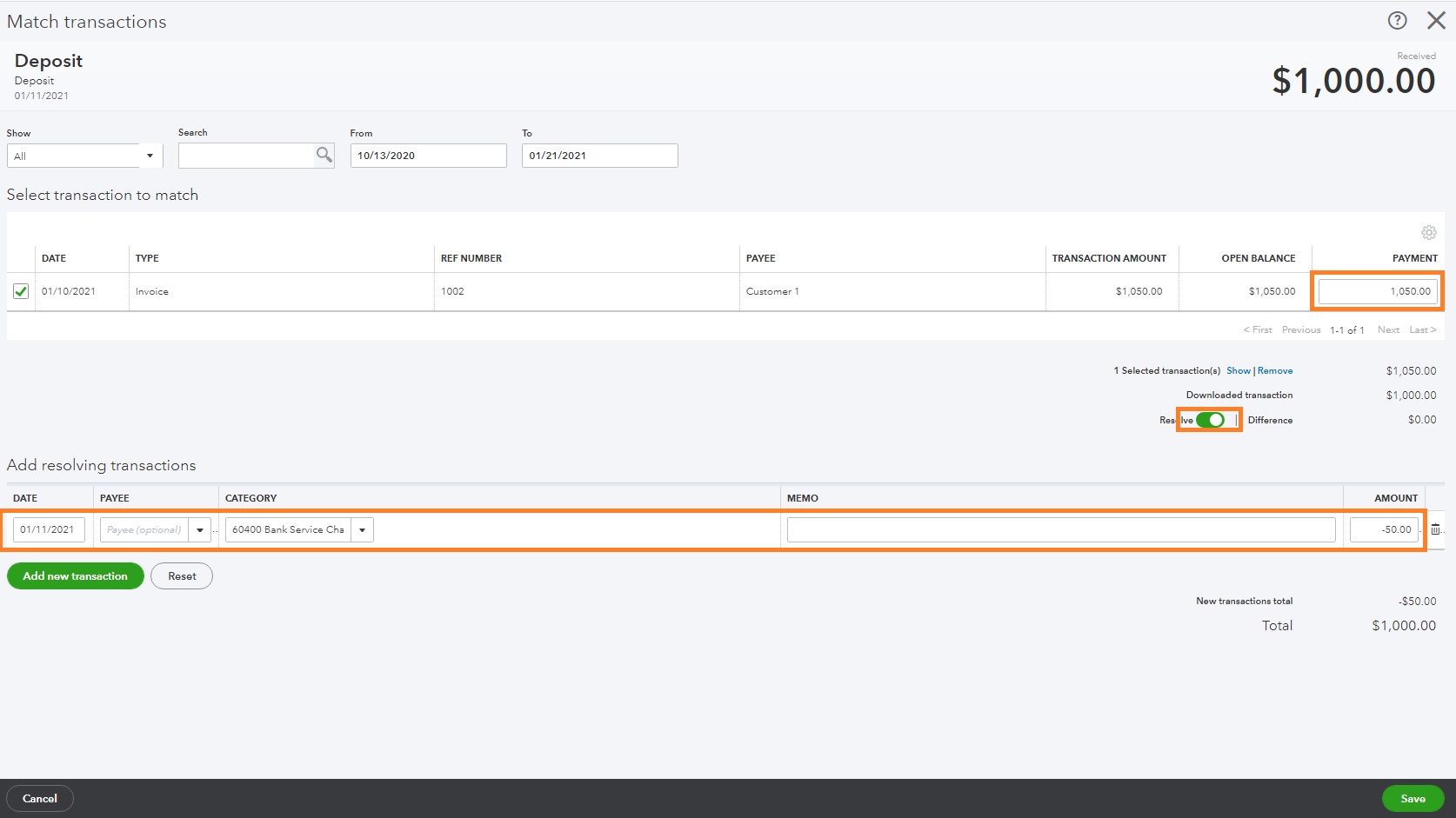Home>Finance>What Are The Two Categories Of Users Of Accounting Information


Finance
What Are The Two Categories Of Users Of Accounting Information
Modified: December 30, 2023
Discover the two main categories of users of accounting information in finance. Gain insights into how this data influences decision-making and financial analysis.
(Many of the links in this article redirect to a specific reviewed product. Your purchase of these products through affiliate links helps to generate commission for LiveWell, at no extra cost. Learn more)
Table of Contents
Introduction
Welcome to the world of accounting information! In the world of finance, accounting information plays a crucial role in assisting decision-making processes, evaluating financial performance, and ensuring regulatory compliance. However, not all users of accounting information are the same, and they have distinct reasons for accessing and utilizing financial data.
In this article, we will explore the two main categories of users of accounting information: internal users and external users. Internal users are individuals within an organization, such as managers and employees, who use accounting information to make operational and strategic decisions. External users, on the other hand, are individuals or entities outside of the organization, such as investors, creditors, and regulatory bodies, who rely on accounting information to assess the financial health and performance of a company.
Understanding these user categories and their unique needs is essential for accountants, financial analysts, and business owners. By tailoring the presentation and format of accounting information to meet these needs, organizations can ensure that the information is utilized effectively to drive sound decision-making and maintain transparency with external stakeholders.
User Categories in Accounting Information
When it comes to accounting information, users can be broadly categorized into two groups: internal users and external users.
Internal users are individuals within an organization who use accounting information for various purposes related to the day-to-day operations and management of the business. These users include managers, employees, and other internal stakeholders who require financial data to monitor performance, plan future activities, and assess the overall financial health of the organization.
External users, on the other hand, are individuals or entities outside of the organization who rely on accounting information to make decisions about their interactions with the company. External users may include investors, creditors, government agencies, regulatory bodies, and other stakeholders who need accurate and reliable financial information to assess the company’s financial position, profitability, and compliance with legal and regulatory requirements.
Both internal and external users have distinct needs and requirements when it comes to accounting information. While both groups rely on financial data to some extent, the specific types of information they require and how they utilize it can vary significantly.
Internal users typically rely on accounting information to support their day-to-day operational and managerial decisions. For example, managers may use financial statements to evaluate the performance of different departments or product lines and make informed decisions about resource allocation and cost control. Employees may also access accounting information to monitor their department’s budget, track expenses, or assess the financial viability of a proposed project.
External users, on the other hand, typically use accounting information to assess the financial health and performance of a company. Investors may examine financial statements, such as the balance sheet, income statement, and cash flow statement, to evaluate the company’s profitability, liquidity, and solvency. Creditors, such as banks or lenders, may review financial information to determine the creditworthiness of a company before extending a loan or credit.
While internal users primarily focus on using accounting information to facilitate decision-making within the organization, external users often rely on this information to evaluate the company’s financial standing and make decisions that can impact their relationship with the company, such as investing or extending credit.
Understanding the unique needs of these user categories is crucial for accountants and financial professionals. By tailoring the presentation and format of accounting information to meet these needs, organizations can ensure that the information is utilized effectively and that the financial interests of both internal and external users are served.
Category 1: Internal Users
Internal users are individuals within an organization who rely on accounting information to make informed decisions regarding the day-to-day operations and management of the business. These users include managers, employees, and other internal stakeholders who need financial data to track performance, plan future activities, and assess the overall financial health of the organization.
Managers, as internal users, play a crucial role in utilizing accounting information to support their decision-making processes. They rely on financial reports, such as income statements, balance sheets, and cash flow statements, to evaluate the profitability, liquidity, and stability of the organization. For example, managers may use these reports to analyze revenue and expenses, identify cost-saving opportunities, and make strategic decisions regarding resource allocation.
Accounting information also helps managers monitor the financial performance of different departments, product lines, or projects within the organization. By comparing actual results to budgeted targets or historical data, managers can assess the efficiency and effectiveness of operations, identify areas for improvement, and implement corrective actions when necessary.
Employees at various levels within the organization also rely on accounting information for their day-to-day activities. For example, sales teams may refer to financial reports to track their sales performance, commissions, or bonuses. HR departments may use accounting information to manage employee payroll, benefits, and expenses. Additionally, accounting data helps employees across different departments make informed decisions about procurement, budgeting, and expense control.
Furthermore, accounting information serves as a valuable tool for internal users involved in strategic planning and decision-making. Executives and top-level managers utilize financial data to evaluate potential investment opportunities, assess the feasibility of new projects or ventures, and determine the long-term financial viability of the organization. By leveraging accounting information, internal users can make sound business decisions that align with the company’s goals and objectives.
Overall, accounting information is indispensable for internal users as it provides them with insights and data necessary for effective decision-making across various levels of the organization. By leveraging this information, managers and employees can optimize operations, improve financial performance, and drive the organization towards sustainable growth and success.
Category 2: External Users
External users of accounting information are individuals or entities outside of the organization who rely on financial data to make decisions about their interactions with the company. These users include investors, creditors, government agencies, regulatory bodies, and other stakeholders who need accurate and reliable information to assess the financial position, performance, and compliance of the organization.
Investors, both existing and potential, are one of the key external users of accounting information. They analyze financial statements, such as the balance sheet, income statement, and cash flow statement, to evaluate the company’s profitability, financial stability, and growth potential. By assessing these financial indicators, investors can make informed decisions about buying, selling, or holding shares in the company. They also use accounting information to evaluate the return on their investments and determine the company’s value in the market.
Creditors, such as banks, lenders, and suppliers, also rely on accounting information to assess the creditworthiness and financial health of a company. By reviewing financial data, creditors can determine whether the organization has the capacity to repay its debts or fulfill its financial obligations in a timely manner. This information helps creditors make decisions regarding extending credit or setting credit terms with the company.
Government agencies and regulatory bodies use accounting information to ensure compliance with financial reporting standards and regulations. They rely on financial statements and other accounting reports to monitor financial activities, detect any potential fraudulent activities or misrepresentations, and enforce legal requirements. Accounting information helps regulatory bodies maintain transparency and accountability in the financial operations of organizations.
Other external users, such as suppliers, customers, competitors, and industry analysts, may also utilize accounting information for various purposes. Suppliers may assess a company’s financial stability to ensure they will be paid for their goods or services. Customers may analyze financial data to evaluate the financial health and reliability of a company before entering into a long-term business relationship. Competitors and industry analysts may use accounting information to benchmark performance and assess the positioning of the company within the market.
Overall, accounting information plays a critical role for external users as it provides them with insights and data necessary to evaluate the financial standing and performance of a company. Whether it’s investors, creditors, governmental agencies, or other stakeholders, accounting information is utilized to make informed decisions that have implications for their financial interests and interactions with the organization.
Key Differences between Internal and External Users
While both internal and external users rely on accounting information, there are key differences in their needs, objectives, and the ways in which they utilize financial data.
One fundamental difference lies in their relationship with the organization. Internal users, such as managers and employees, are part of the organization and have direct access to internal data systems and resources. They have a more in-depth understanding of the organization’s operations, goals, and challenges. External users, on the other hand, are individuals or entities outside of the organization and do not have direct access to internal information. They rely on the financial reports and disclosures provided by the organization to assess its financial standing.
The primary focus of internal users is on using accounting information to support decision-making and operational activities within the organization. They use financial data to monitor performance, plan future activities, and evaluate the financial health of the organization. Internal users have a more detailed and granular view of the organization’s finances, allowing them to make timely and informed decisions that impact day-to-day operations.
External users, however, have a different set of needs and objectives. Their primary focus is on assessing the financial position and performance of the organization from an external perspective. They rely on accounting information to evaluate the company’s profitability, stability, and compliance with legal and regulatory requirements. External users have a broader view of the organization’s finances, which helps them make decisions that can impact their relationship with the company, such as investing, lending, or engaging in business transactions.
Another key difference is the level of detail and complexity of the accounting information needed. Internal users often require detailed, real-time financial information to support operational decision-making. They may need access to specific cost data, budget variances, or department-level performance metrics. In contrast, external users typically rely on summarized financial reports, such as financial statements, to assess the overall financial health of the organization. They may focus on high-level financial indicators, such as revenue trends, profit margins, or debt levels.
Furthermore, the time horizon of the information needed also differs between internal and external users. Internal users require both historical and forward-looking information to plan and manage operations effectively. They rely on past financial data to assess performance and identify trends, as well as on forecasts and budgets to make future projections. External users, however, primarily focus on historical financial information to assess the organization’s past performance and make informed decisions based on past results.
Overall, while both internal and external users rely on accounting information, their specific needs, objectives, and ways of utilizing the data differ significantly. Internal users require detailed, real-time information to support decision-making and operational activities, while external users rely on summarized financial reports to assess the organization’s financial health from an external perspective.
Importance of Accounting Information for Internal Users
Accounting information is of utmost importance for internal users within an organization as it provides vital insights into the financial health and performance of the business. Here are some key reasons why accounting information is crucial for internal users:
Decision-Making: Internal users, such as managers and employees, rely on accounting information to make informed decisions about the day-to-day operations and strategic direction of the organization. By analyzing financial statements, budget reports, and cost data, they can assess the financial implications of different options and make decisions that align with the organization’s goals and objectives. Accounting information helps managers identify opportunities for growth, allocate resources effectively, and optimize operational efficiency.
Performance Evaluation: Accounting information provides a mechanism for monitoring and evaluating the performance of different departments, product lines, or projects within the organization. By comparing actual financial results to budgeted targets or historical data, internal users can identify areas of strength and weakness, measure the effectiveness of strategies, and implement corrective actions when necessary. This performance evaluation helps in setting realistic goals, rewarding high-performing teams, and improving overall organizational efficiency.
Planning and Forecasting: Accounting information is essential for effective planning and forecasting within the organization. By analyzing historical financial data and market trends, internal users can develop budgets, create financial forecasts, and set realistic targets for the future. This information helps in resource allocation, capacity planning, and long-term strategic decision-making. It provides a roadmap for the organization to achieve its financial objectives and serves as a benchmark for evaluating actual performance.
Cost Control and Efficiency: Accounting information plays a crucial role in cost control and efficiency management. By tracking and analyzing costs, internal users can identify areas of unnecessary expenditure, introduce cost-saving measures, and improve the overall financial performance of the organization. Cost information helps in setting pricing strategies, evaluating profitability, and optimizing resource utilization. By understanding the true cost of products or services, internal users can make informed decisions regarding production, pricing, and supply chain management.
Risk Management and Compliance: Accounting information provides valuable insights that help internal users manage risks and ensure compliance with legal and regulatory requirements. By monitoring financial data and internal controls, internal users can identify areas of potential risk, detect fraudulent activities, and implement measures to mitigate these risks. Accounting information is also crucial for meeting reporting obligations and ensuring that the organization operates in accordance with applicable accounting standards, tax regulations, and industry-specific regulations.
Transparent Communication: Accounting information serves as a common language that facilitates transparent communication within the organization. It enables internal users from different departments and levels of management to understand and interpret financial data consistently. By sharing accurate and reliable accounting information, internal users can foster collaboration, alignment, and trust across the organization.
In summary, accounting information is vital for internal users as it supports decision-making, performance evaluation, planning, cost control, risk management, and transparent communication within the organization. By leveraging accounting information effectively, internal users can drive the organization towards financial success and growth.
Importance of Accounting Information for External Users
Accounting information holds significant importance for external users as it provides vital insights into the financial health and performance of an organization. Here are key reasons why accounting information is crucial for external users:
Investment Decision-Making: External users, such as investors, rely on accounting information to make informed decisions about investing in a company. By analyzing financial statements, such as the balance sheet, income statement, and cash flow statement, investors can assess the company’s profitability, financial stability, and growth potential. Accounting information helps investors evaluate the return on their investments, determine the company’s value in the market, and make educated decisions regarding buying, holding, or selling shares.
Creditworthiness Assessment: Creditors, including banks and lenders, heavily rely on accounting information to assess the creditworthiness and financial health of a company. By reviewing financial reports, creditors can determine whether the organization has the capacity to repay its debts or fulfill its financial obligations in a timely manner. This information plays a crucial role in lending decisions, setting credit terms, and managing credit risk. Accounting information helps creditors evaluate the financial stability and reliability of a company to make informed decisions about extending credit.
Regulatory Compliance: Government agencies and regulatory bodies utilize accounting information to ensure compliance with financial reporting standards and regulations. They rely on financial statements and other accounting reports to monitor financial activities, detect potential fraudulent activities or misrepresentations, and enforce legal requirements. Accounting information helps regulatory bodies maintain transparency and accountability in the financial operations of organizations, ensuring that they adhere to applicable regulations and standards.
Supplier and Customer Assessment: Suppliers and customers often use accounting information to assess the financial stability and reliability of a company. Suppliers may evaluate a company’s financial health to ensure they will be paid for their goods or services. Customers may analyze the financial data to assess the company’s ability to fulfill orders, honor warranties, or provide ongoing support. Accounting information helps suppliers and customers make informed decisions about engaging in long-term business relationships and mitigating potential risks.
Industry Analysis and Benchmarking: External users, such as industry analysts and competitors, use accounting information to analyze the financial performance of a company within its industry. By comparing financial data with industry benchmarks and competitors’ performance, external users can assess the company’s financial position, profitability, and market value. This information helps in evaluating the company’s competitiveness, identifying strengths and weaknesses, and making strategic decisions.
Market Transparency and Investor Confidence: Accounting information plays a critical role in maintaining market transparency and investor confidence. By providing accurate and reliable financial data, companies can establish credibility and trust with external users. Transparent and informative financial reporting helps investors and stakeholders understand the financial position, performance, and prospects of a company. It enhances market efficiency and fosters investor confidence, which is crucial for attracting investment, maintaining stock market stability, and driving economic growth.
Overall, accounting information is of utmost importance for external users as it provides them with crucial insights into the financial health and performance of organizations. It assists in investment decision-making, creditworthiness assessment, regulatory compliance, supplier and customer evaluation, industry analysis, and market transparency. By leveraging accounting information effectively, external users can make informed decisions that have implications for their financial interests and interactions with the organization.
Conclusion
Accounting information serves as a vital tool for both internal and external users, providing valuable insights into the financial health and performance of an organization. Internal users, including managers and employees, rely on accounting information to support decision-making, performance evaluation, planning, cost control, and risk management within the organization. The detailed and real-time financial data assists them in optimizing operations and driving the organization towards sustainable growth.
External users, such as investors, creditors, government agencies, and industry analysts, depend on accounting information to assess the financial position, profitability, and compliance of the organization. This information guides their investment decisions, creditworthiness assessments, regulatory compliance monitoring, industry analysis, and market transparency efforts. The reliability and transparency of accounting information play a crucial role in earning the trust and confidence of external stakeholders.
While internal users focus on operational decision-making and maximizing organizational efficiency, external users primarily utilize accounting information to make informed decisions that impact their financial relationships with the organization. The level of detail, time horizon, and specific needs vary between internal and external users, reflecting their unique perspectives and objectives.
Accounting information is not only a means of conveying financial data but also a common language that facilitates transparent communication and collaboration within the organization. It helps bridge the gap between departments, aligns stakeholders, and enables informed decision-making at all levels.
In conclusion, accounting information is a critical component of financial management, providing crucial insights and data necessary for effective decision-making, transparency, and accountability for both internal and external users. By leveraging accounting information effectively, organizations can optimize operational efficiency, attract investments, maintain good relationships with creditors, satisfy regulatory requirements, foster market transparency, and drive sustainable growth in today’s dynamic business environment.














